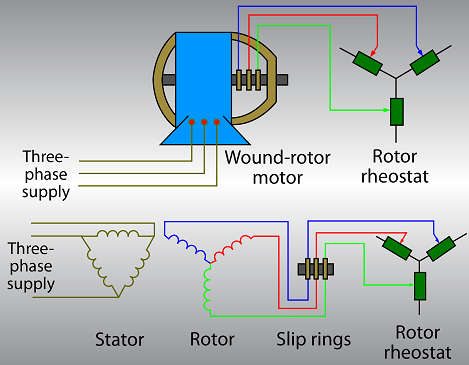
Electrical Maintenance

The equation is as follows: If a circuit has a resistance of 25 ohms and a potential of 125 volts, the current drawn in this circuit would be 5 amps. This basic circuit provides a foundational understanding for the next topic: electric shock. A significant concern when working near electrical equipment is the effects of electrical shock on the human body. Understanding these effects allows for an examination of other electrical hazards encountered in the workplace. Most individuals recognize that the primary danger from electricity is electrocution; however, few comprehend the minimal amount of electric energy required to cause fatal electrocution. For instance, the current drawn by a 7-watt, 120-volt lamp passing from hand to hand or from hand to foot can be sufficient to cause fatal electrocution. Just as current, rather than voltage, heats a wire, it is also current that inflicts physiological damage. Various values of 60-hertz alternating current (AC) and their effects on an average human are outlined in Table 1. In summary, any current of 15 mA or more may be fatal, those between 100 mA and 4 amperes are likely fatal due to heart failure, while currents above 5 amperes may result in severe burns. However, it is noted that shocks in the higher current range are statistically less dangerous than those in the 100 mA to 4 amperes range. Given the diverse injuries associated with electric energy contact, it is logical to minimize exposure to energized parts to prevent electric shock or electrocution. Ohm's law can be employed to determine the current, which is the primary concern, with the human body acting as the resistive element of the circuit. The voltage in Ohm's law is the system's voltage, while the resistance, which is variable, is the controlling factor. The resistance of the human skin, along with factors such as contact area, contact tightness, skin dryness, and the presence of cuts or abrasions, causes this resistance to fluctuate. Excluding the skin, human resistance is approximately 250 ohms per arm or leg and ranges from 100 to 500 ohms from shoulder to shoulder or hip. Increased muscularity correlates with lower body resistance, whereas slender limbs or those primarily composed of fat exhibit higher resistance. Bone also has high resistance. Table 2 illustrates the range of variations in human resistance. The total resistance of the human circuit is the sum of the two contact resistances and the internal body resistance. Table 3 compares human resistance to various materials. When faced with an electrical issue, such as lights being out, a non-functional fan, or an outlet malfunctioning, the initial step is to avoid overlooking the obvious. Is the switch off, is the bulb blown, or is the circuit breaker tripped? Often, a simple solution resolves the problem. If the issue is not readily apparent, the troubleshooting process begins. The first step is to locate the electrical prints for the circuit in question. As previously indicated, blueprints serve as a roadmap for locating and isolating circuits and identifying the locations of various components.
The relationship between voltage, current, and resistance is governed by Ohm's Law, which is mathematically expressed as V = I × R, where V is voltage in volts, I is current in amps, and R is resistance in ohms. In practical applications, understanding this relationship is crucial for designing safe and effective electrical circuits. The scenario presented, with a resistance of 25 ohms and a voltage of 125 volts, results in a current of 5 amps, which can be calculated as follows: I = V/R = 125V / 25Ω = 5A.
When examining electric shock, it is essential to consider the physiological impacts of different current levels on the human body. The thresholds for sensation, pain, and potential fatality vary significantly. For example, currents as low as 1 mA can be felt, while currents above 10 mA can lead to muscle contractions, making it difficult for an individual to release a live conductor. Currents in the range of 100 mA to 4 A are particularly dangerous due to their ability to cause ventricular fibrillation, which can lead to cardiac arrest.
In the context of electrical troubleshooting, a systematic approach is vital. After confirming that the obvious issues have been addressed, such as checking switches and bulbs, the technician should consult the circuit diagrams. These diagrams provide essential information regarding the circuit layout, component locations, and potential failure points. Understanding the nature of the electrical components involved, including resistors, capacitors, and circuit breakers, further aids in diagnosing issues efficiently.
By applying these principles and methodologies, individuals working with electrical systems can enhance their safety and effectiveness, reducing the risks associated with electric shock and ensuring the integrity of the electrical installations they manage.The equation is: Putting some values to this equation, if a circuit has a resistance of 25 ohms (O) and a potential of 125 volts, the current that is drawn in this circuit would be 5 amps. This basic circuit will give you some understanding for the next subject that we will discuss: electric shock.
An important concern when working near electrical equipment is the effects of electrical shock on the human body. When we understand what these effects are, we can examine the other electrical hazards found on the job. Most people are aware that the principal danger from electricity is that of electrocution, but few really understand just how minute a quantity of electric energy is required for electrocution.
Actually, the current drawn by a 7 -watt, 120-volt lamp passed from hand to hand or from hand to foot is enough to cause fatal electrocution. Just as it is current and not voltage that heats a wire, it is current that causes physiological damage.
Different values of 60-hertz alternating current (AC) and their effects on an average human are listed in ```Table 1```. In short, any current of 15 mA or more may be fatal, those between 100 mA and 4 amperes are probably fatal due to heart failure, and those above 5 amperes may be fatal from severe burns.
It is a fact, however, that shocks in this last current range are statistically less dangerous than those in the 100 mA to 4 amperes range. In view of the wide diversity of injuries derived from contact with electric energy, it is only logical that there must be minimum exposure to energized parts to prevent electric shock or electrocution.
Ohm`s law may be used to determine the current, which is the value of interest, with the human body serving as the resistive element of the circuit. The E of Ohm`s law is the voltage of the system itself. The R, which is the variable, is actually the controlling factor. Essentially, it is the human skin, along with such factors as area of contact, tightness of contact, dryness of the skin, and the presence of any cuts, abrasions, or blisters that causes the resistance to vary.
Except for the skin, human resistance is about 250 ohms per arm or leg, and 100 to 500 ohms from shoulder to shoulder or hip. The more muscular the person, the lower their body`s resistance. Skinny arms or legs and those made up principally of fat have higher resistance. Bone too has a high level of resistance. Table 2 shows the range of human resistance variations. The total human circuit resistance is, of course, the sum of the two contact resistances and the internal body resistance.
Use Table 3 to compare human resistance to various materials. When given a problem, for instance the lights being out, the fan not working, an outlet not working, or another electrical problem, there are a few simple steps to determine what is wrong, if anything, and what needs to be done to correct it. The first step is to never overlook the obvious. Is the switch off, the bulb blown, or the circuit breaker tripped Many times, something simple will be the answer to the problem.
If the answer is not immediately apparent, then we begin the troubleshooting process. First, find the electrical prints for the circuit involved. As we showed in the beginning of this class, blueprints provide a road map in locating and isolating circuits. They also identify the location(s) of the various pieces of 🔗 External reference
The relationship between voltage, current, and resistance is governed by Ohm's Law, which is mathematically expressed as V = I × R, where V is voltage in volts, I is current in amps, and R is resistance in ohms. In practical applications, understanding this relationship is crucial for designing safe and effective electrical circuits. The scenario presented, with a resistance of 25 ohms and a voltage of 125 volts, results in a current of 5 amps, which can be calculated as follows: I = V/R = 125V / 25Ω = 5A.
When examining electric shock, it is essential to consider the physiological impacts of different current levels on the human body. The thresholds for sensation, pain, and potential fatality vary significantly. For example, currents as low as 1 mA can be felt, while currents above 10 mA can lead to muscle contractions, making it difficult for an individual to release a live conductor. Currents in the range of 100 mA to 4 A are particularly dangerous due to their ability to cause ventricular fibrillation, which can lead to cardiac arrest.
In the context of electrical troubleshooting, a systematic approach is vital. After confirming that the obvious issues have been addressed, such as checking switches and bulbs, the technician should consult the circuit diagrams. These diagrams provide essential information regarding the circuit layout, component locations, and potential failure points. Understanding the nature of the electrical components involved, including resistors, capacitors, and circuit breakers, further aids in diagnosing issues efficiently.
By applying these principles and methodologies, individuals working with electrical systems can enhance their safety and effectiveness, reducing the risks associated with electric shock and ensuring the integrity of the electrical installations they manage.The equation is: Putting some values to this equation, if a circuit has a resistance of 25 ohms (O) and a potential of 125 volts, the current that is drawn in this circuit would be 5 amps. This basic circuit will give you some understanding for the next subject that we will discuss: electric shock.
An important concern when working near electrical equipment is the effects of electrical shock on the human body. When we understand what these effects are, we can examine the other electrical hazards found on the job. Most people are aware that the principal danger from electricity is that of electrocution, but few really understand just how minute a quantity of electric energy is required for electrocution.
Actually, the current drawn by a 7 -watt, 120-volt lamp passed from hand to hand or from hand to foot is enough to cause fatal electrocution. Just as it is current and not voltage that heats a wire, it is current that causes physiological damage.
Different values of 60-hertz alternating current (AC) and their effects on an average human are listed in ```Table 1```. In short, any current of 15 mA or more may be fatal, those between 100 mA and 4 amperes are probably fatal due to heart failure, and those above 5 amperes may be fatal from severe burns.
It is a fact, however, that shocks in this last current range are statistically less dangerous than those in the 100 mA to 4 amperes range. In view of the wide diversity of injuries derived from contact with electric energy, it is only logical that there must be minimum exposure to energized parts to prevent electric shock or electrocution.
Ohm`s law may be used to determine the current, which is the value of interest, with the human body serving as the resistive element of the circuit. The E of Ohm`s law is the voltage of the system itself. The R, which is the variable, is actually the controlling factor. Essentially, it is the human skin, along with such factors as area of contact, tightness of contact, dryness of the skin, and the presence of any cuts, abrasions, or blisters that causes the resistance to vary.
Except for the skin, human resistance is about 250 ohms per arm or leg, and 100 to 500 ohms from shoulder to shoulder or hip. The more muscular the person, the lower their body`s resistance. Skinny arms or legs and those made up principally of fat have higher resistance. Bone too has a high level of resistance. Table 2 shows the range of human resistance variations. The total human circuit resistance is, of course, the sum of the two contact resistances and the internal body resistance.
Use Table 3 to compare human resistance to various materials. When given a problem, for instance the lights being out, the fan not working, an outlet not working, or another electrical problem, there are a few simple steps to determine what is wrong, if anything, and what needs to be done to correct it. The first step is to never overlook the obvious. Is the switch off, the bulb blown, or the circuit breaker tripped Many times, something simple will be the answer to the problem.
If the answer is not immediately apparent, then we begin the troubleshooting process. First, find the electrical prints for the circuit involved. As we showed in the beginning of this class, blueprints provide a road map in locating and isolating circuits. They also identify the location(s) of the various pieces of 🔗 External reference





